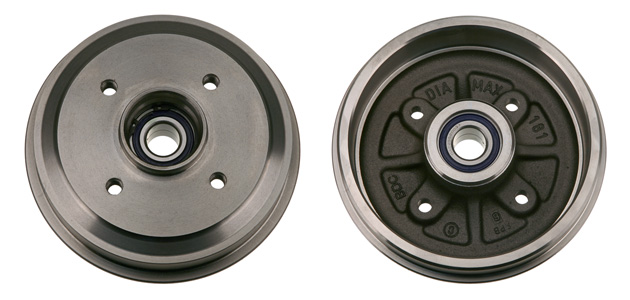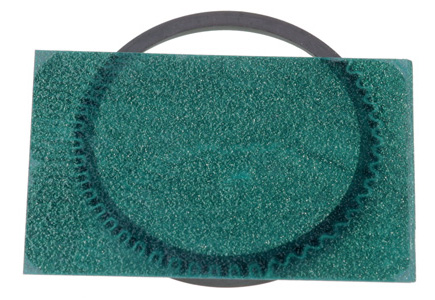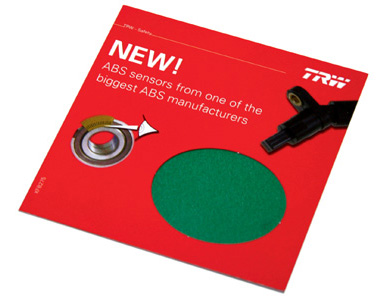
Q. I have a question regarding rear brake drums on a Peugeot 106. I have just purchased a pair of TRW drum brakes (part no: DB4160), and want to re-use the bearing from the original drums as there is nothing wrong with them. However, the circlip holding the bearing in has no holes in the tail ends, and I can see no way of removing it. Any ideas?
A. It is quite common these days for the OE part to use the latest design of circlip, which cannot be as easily removed as the standard type, nor using normal circlip pliers. There are two easy ways to solve the problem:
1. My recommended option is to purchase our part number DB4160B (pictured, below) which comes complete with a new bearing (and is fitted with a conventional circlip).

From TRW’s point of view this is the most sensible option because the customer gets a new bearing in the new drum and everything is back to the original OE specification, with a full warranty, and many years of trouble-free motoring. This way you can be sure the bearing isn’t going to fail in the not-too-distant future, because it has reached the end of its life. Explain the consequences of not changing the bearing (unnecessary labour costs if the component needs replacing soon after) and think of it as up-selling – a common practice in all sales-driven businesses.
2. If the reason you want to use the old bearing is simply one of cost, then your only alternative is to purchase a special circlip removal tool. Whichever route you decide to take you will need to swap over the ABS sensor ring – the rubber-like ring which contains magnetic segments (pictured, right). Remove it very carefully from the old drum, by prizing off with a flat blade screwdriver, making sure you work all around the circumference. To fit it to the new drum use a round disc that covers the whole of the sensor ring and gently tap into place with a suitable hammer/mallet.
take you will need to swap over the ABS sensor ring – the rubber-like ring which contains magnetic segments (pictured, right). Remove it very carefully from the old drum, by prizing off with a flat blade screwdriver, making sure you work all around the circumference. To fit it to the new drum use a round disc that covers the whole of the sensor ring and gently tap into place with a suitable hammer/mallet.
DO NOT use the hammer/mallet directly onto the sensor ring. I would suggest that prior to removal, and after re-fitting, you use a magnetic reader (such as that pictured below) to check all the magnetic segments are in place and not damaged. Remember, if just one segment is missing it can lead to a fault in the ABS system.










